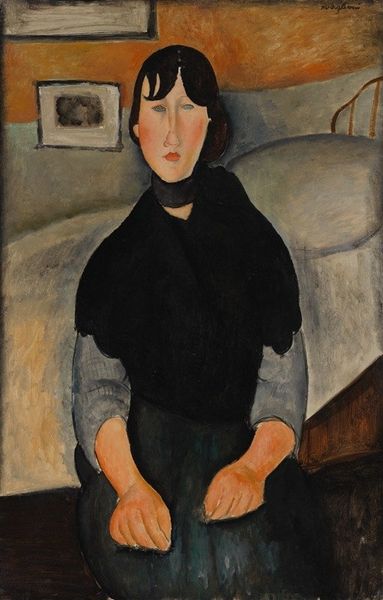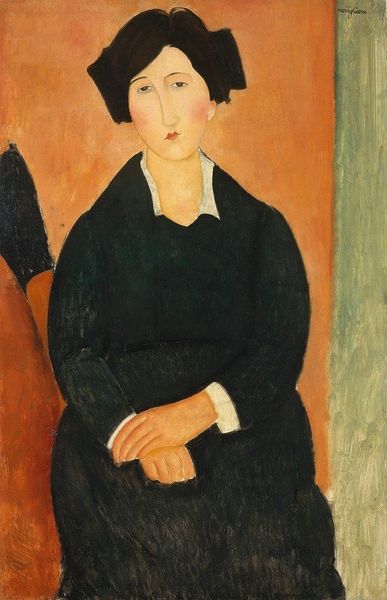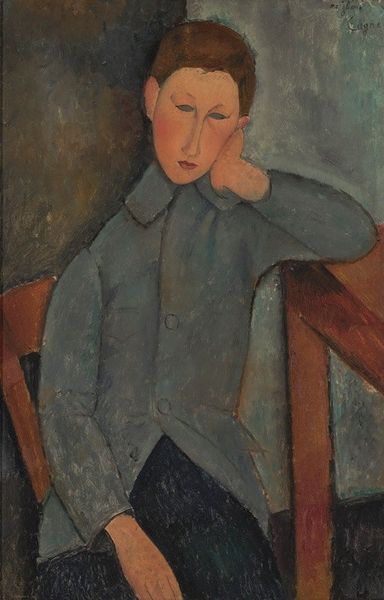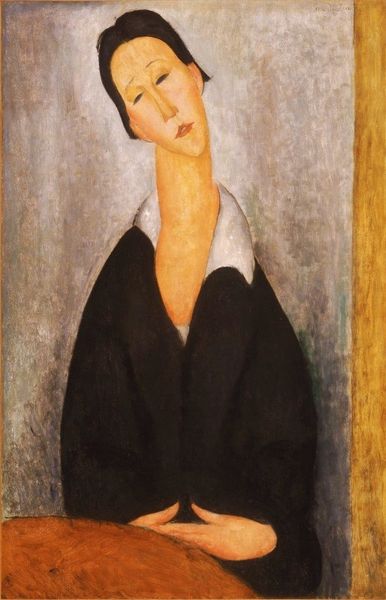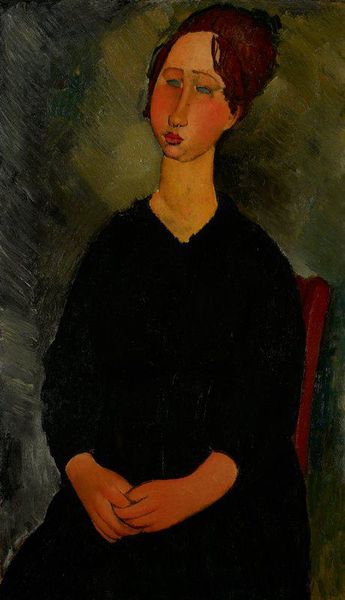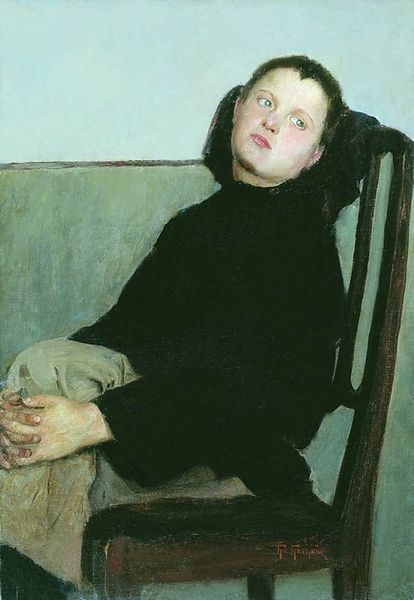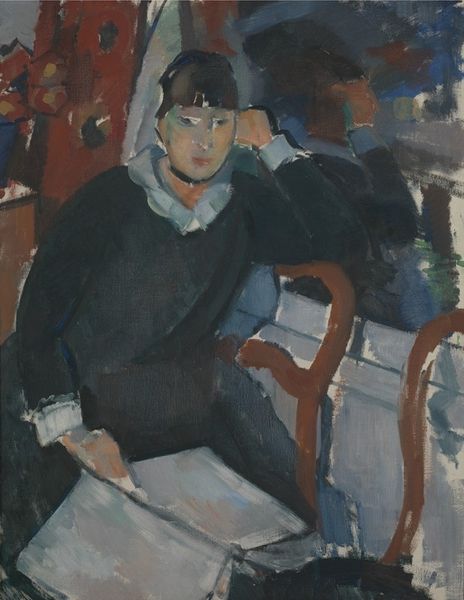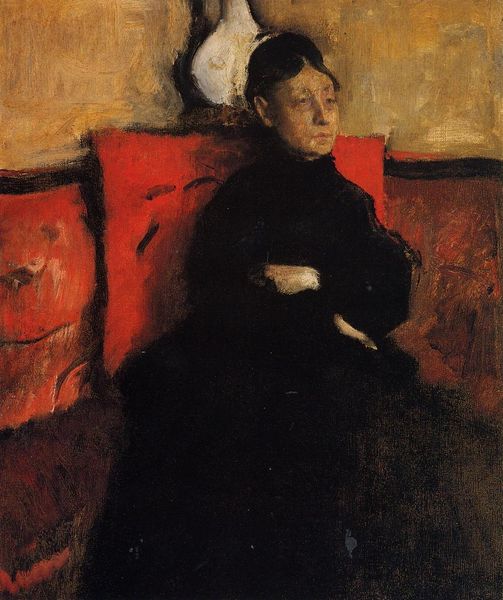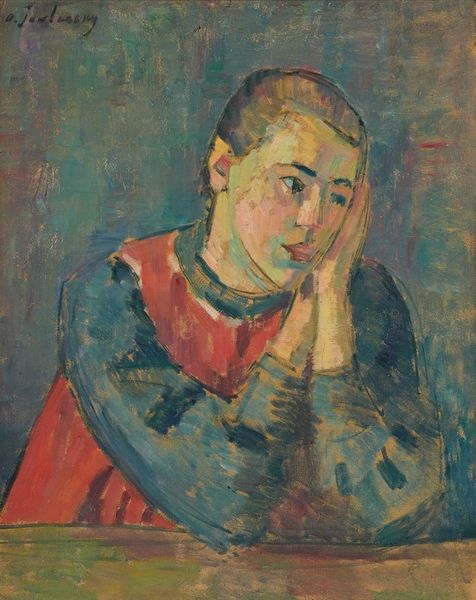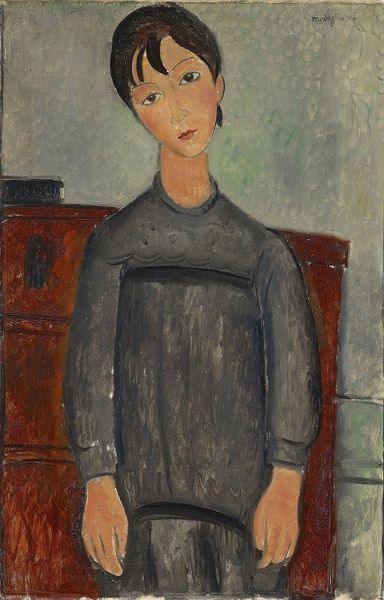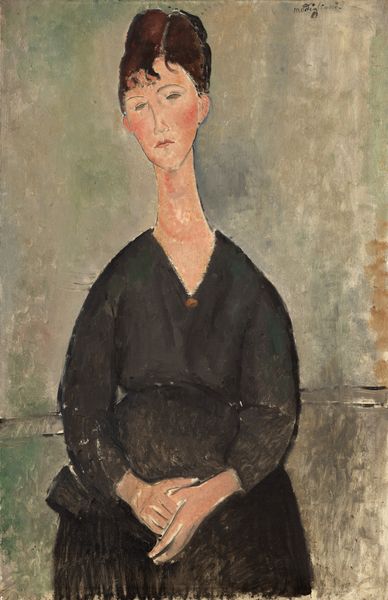
Copyright: Public Domain: Artvee
Editor: So this is "Elvira Resting at a Table," painted by Amedeo Modigliani in 1919. It’s an oil painting. What strikes me most is the contrast between the woman's heavy, almost melancholic pose and the lively, almost fauvist brushstrokes around her. How do you interpret this work? Curator: What fascinates me here is the psychological weight imbued in what seems a simple portrait. Look at the elongated face, the almond-shaped eyes lacking pupils; they echo archaic Greek Kouroi, imbuing Elvira with a timeless quality, almost masking the immediate context of post-WWI Europe. Modigliani often reached back into historical styles, a search for enduring symbols amidst the flux. Do you see that timelessness in her expression too? Editor: Yes, now that you mention it, there's a sense of classical sculpture about her face. But why the blank eyes? Curator: The blank eyes can symbolize inner reflection, turning inward. This was the age of Freud and a fascination with the subconscious, of Symbolism's concern with states of feeling over outward observation. In leaving out the pupils, Modigliani might be less portraying an individual than suggesting a universal condition of pensiveness and rest – or perhaps, a questioning. Consider her hand propping her face; what emotional significance does that gesture convey? Editor: It reads as weariness, I guess, or maybe deep thought. It definitely changes how I see the painting – not just a portrait but a meditation on the interior self. Curator: Precisely! The seeming simplicity masks a rich exploration of psychological and historical resonances, revealing cultural continuity even in modernist forms. Editor: I learned to observe those features that Modigliani seemed to have reinterpreted into a classic figure. Thanks so much for sharing this rich historical, psychological, and artistic insight with me!
Comments
No comments
Be the first to comment and join the conversation on the ultimate creative platform.
